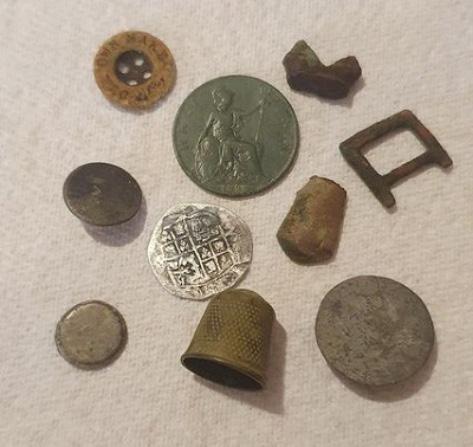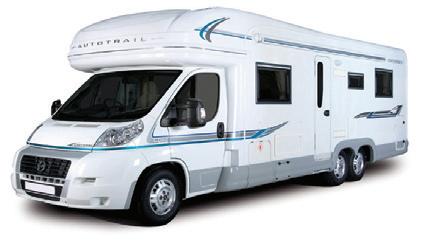
5 minute read
Treasure hunting and metal detecting
with Emma Shearman Smith
Metal detecting is a unique hobby that seems to ignite that childhood enthusiasm and thrill for finding buried treasure. People who begin metal detecting want to combine an interest in history and make a little money too or they might even strike gold and get rich. It is a rewarding pastime that is both enjoyable and educational and absolutely involves a great deal of science. Many of you may have seen the wonderful engaging series The Detectorists. The plot revolves around the lives, loves and metal-detecting ambitions of Andy and Lance, members of the Danebury Metal Detecting Club. It definitely demonstrates the gentle, relaxing and somewhat frustrating side to metal detecting, although the sun always seemed to be out which could not be further from the cold wet boggy fields I have on occasions found myself on! It’s totally true that the guys I detect with all seem to wear camouflage gear from head to toe and when asked why I was informed so their partners can’t see them when they leave the house! It seems as a hobbies go this has to be the most addictive and all you want to do is be in a field as often as you can. So sneaking out at the weekend rather than being with your nearest and dearest can be an issue!
Advertisement

Getting started can be as relatively cheap or expensive as you want, although you understand these regulations and know when and what to report to your local do find you need more Finds Liaison Officer, affectionately known as FLO. equipment than you would first imagine. Detectors There have been some amazing finds over the years by detectorists, including range from under £100 to the Frome, Staffordshire and Seaton Down hoards. The Frome Hoard, found thousands of pounds but from in 2012, was composed of 52,503 Roman coins that date from AD 253 to 305. experience it pays to spend Even more importantly the majority of the coins were made from silver or as much as your budget can Staffordshire hoard bronze. One of the most important features of this hoard was that it was ground afford; the more expensive Copyright Birmingham Museum & Art Gallery coins issued by Carausius who ruled Britain between 286 and 293. This was ones most definitely have the edge with accuracy and depth. You will also need the first Roman Emperor to strike coins in Britain. The hoard has been valued a good light spade and I would highly recommend a pointer, which looks like at £320,250. The Staffordshire Hoard detected in 2009 is the largest hoard of a long carrot and will help pinpoint accurately the tiniest of finds, with some Anglo-Saxon gold that has ever been discovered. The hoard comprises 3,500 silver-hammered coins being as small as your finger nail! Joining local groups items that are virtually all military in nature. The artefacts have been dated to is a great way to access land and get to know likeminded detectorists; they are between the 7th and 8th centuries and come from the Anglo Saxon kingdom great at helping you get to grips with your new detector and how to use it. It’s of Mercia. The quality very important to understand the laws and guidelines around metal detecting of the workmanship is before you start, with permission from the landowner being an absolute. superb and is valued at It is illegal to detect on any site of Scheduled Monuments, Sites of Special approximately £3,285 Scientific Interest or Ministry of Defence property without permission from million. The Seaton the appropriate authority. But most beaches, whilst owned by the Crown, are Down Hoard found open to anyone with a metal detector. The Treasure Act 1996 and its Code of in 2003 turned out Practice covers finds made which meet the definition of treasure. These can to be one of the most include finds made when digging in a garden or during construction work, important finds of and don’t forget if you are lucky enough to find something of significant Roman coins in UK value it must be shared with the land owner! Every detectorist must read and history. Once they had

George III gold guinea
been cleaned, identified and catalogued by the British Museum, it was discovered that they ranged from AD 260 to AD 350 and bore a range of portraits from the House of Constantine. The British Museum has called the hoard ‘remarkable’, pointing out that it is one of the largest hoards ever found within the whole Roman Empire. In total there were about 22,000 coins making it the fifth largest find of Roman coins in Britain. The proceeds of the hoard, which is valued at approximately £100,000, was split between detectorist and the landowner. Whilst these are amazing finds most detectorists find much simpler everyday objects such as buttons, buckles, bullets, shell casings, pieces of farm machinery as well as the odd pull ring and tin can! If you ask any detectorist what they love finding the most they will say silver and gold coins and anything Roman or Saxon. You can always hear the whoop of delight followed by a mass gathering around the person who just pulled up a lovely early hammered silver coin, or part of a beautiful Roman brooch! Whatever you find when you go metal detecting it is always exciting – some days you find nothing, other days a fabulous 13th-century silver-hammered coin or musket balls from the 17th-century Civil War!. Three pieces of advice for anyone wanting to become a detectorist: you need patience in abundance; deep pockets (as metal detectors are addictive); and Arctic expedition clothing. It gets cold out on those fields!

Elizabeth 1st 1574 silver hammered coin Everyday finds…buckles coins and thimbles Approx. 900bc bronze axe head














